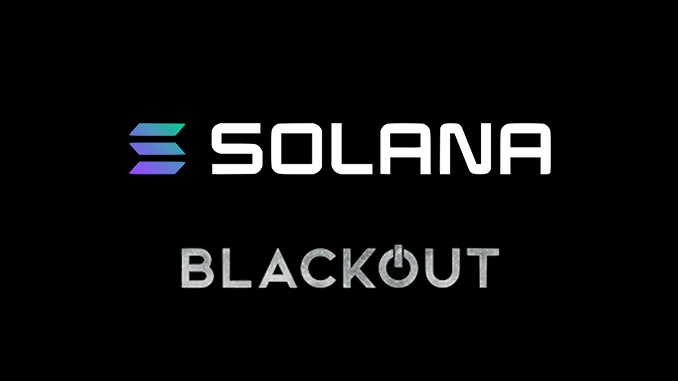
At Solana (SOL), network overload has led to 7 hours of downtime and necessitated a restart. Solana has experienced such incidents several times and is raising skepticism about reliability.
On Sunday at noon, Solana experienced a figurative outage: Via Twitter, the news spread that the mainnet had to be stopped and a restart was necessary. Transactions at Solana were impossible for about seven hours. At least the restart succeeded, and in the meantime SOL is running as usual again. But doubts have been growing since a first major network outage in September 2021, when Solana and the associated ecosystem were out of action for 16 hours. That’s because Solana has struggled with congestion several times since then, and updates have yet to provide a reliable remedy.
Network operators at Solana explained the latest situation by saying that 4 million requests per second unexpectedly hit the network, generating more than 100 gigabytes of data per second. It seems that these were bots trying to access the so-called Candy Machine. This module at Solana is preferably used to generate NFTs. Metaplex, the crypto company behind the Solana Candy Machine, now wants to introduce a penalty fee of 0.01 SOL when bots flood the mainnet with only partially serious requests. According to Metaplex’s Twitter message, it will also investigate how to prevent bots from overwhelming the Candy Machine.
Solana currently has a good $6 billion invested in DeFi activities. In the event of network outages, access to this capital is not possible, which is more than scary for strategies that are often precisely timed. Fortunately, as far as we know, Solana’s network outages have not yet resulted in any problems where capital itself was at risk. Now, when the lights went out at Solana on Sunday, SOL’s price curve dropped abruptly by 10 percent, but later recovered.
Conclusion: Critical incidents at Solana are becoming more frequent
What’s surprising about Solana: When a network receives more requests than it can immediately handle, it should actually switch to a mode that parks the jobs in a queue and then processes them. While this is also very annoying for users, it poses fewer dangers than emergency shutdown and restart. To be fair, it should be mentioned that the documented network failures at Solana each had different causes. But many investors don’t actually want to look at the technology behind Solana in detail and mainly see the impact. For example, manually shutting down bots is already being criticized as censorship. Solana also has to contend with objections on other fronts, with criticism of insufficient decentralization, for example. One thing is clear: In the medium term, Solana must increase reliability and transparency in order to defend its promising position among the Ethereum killers.
Leave a Reply